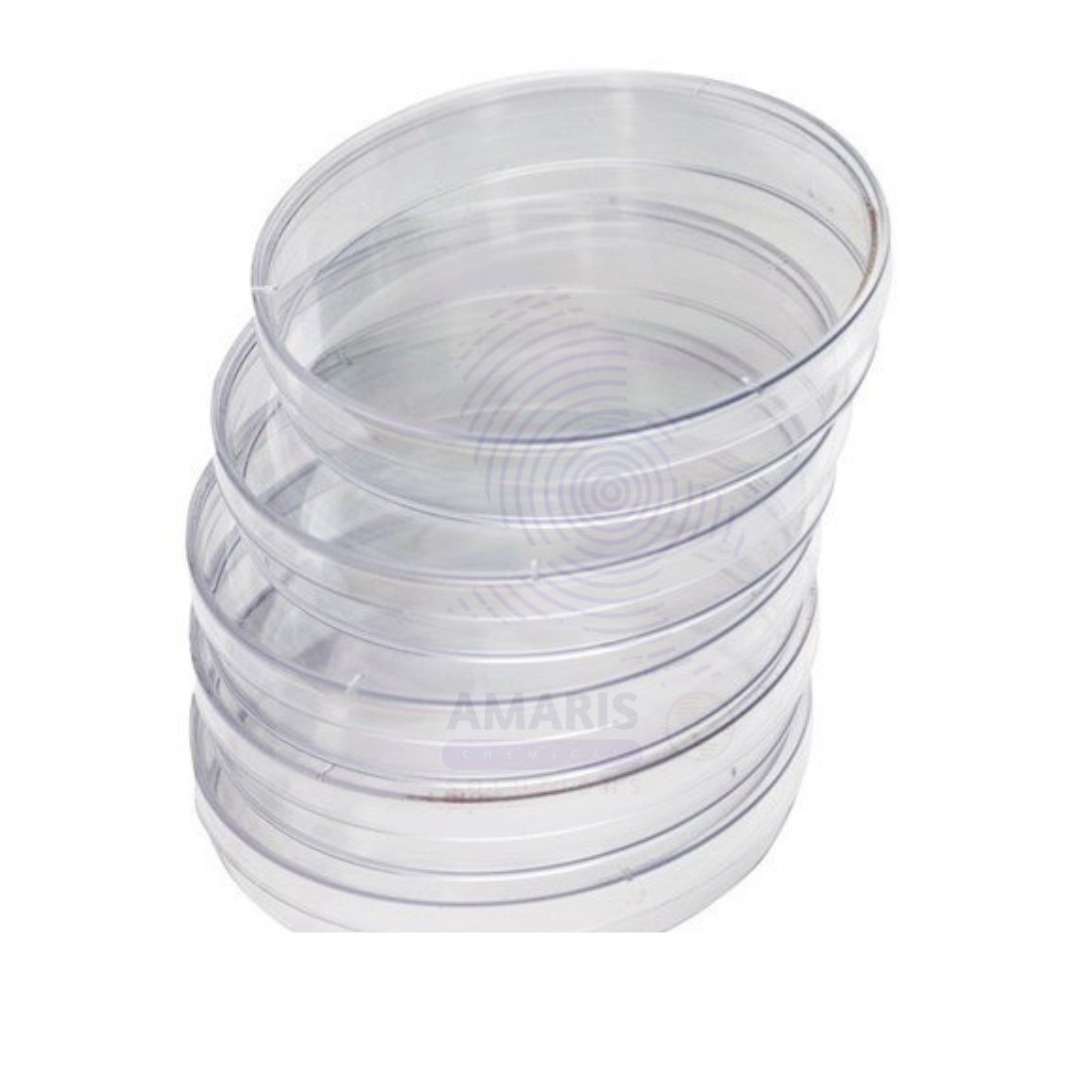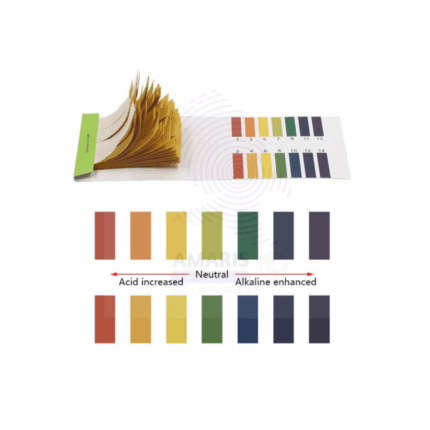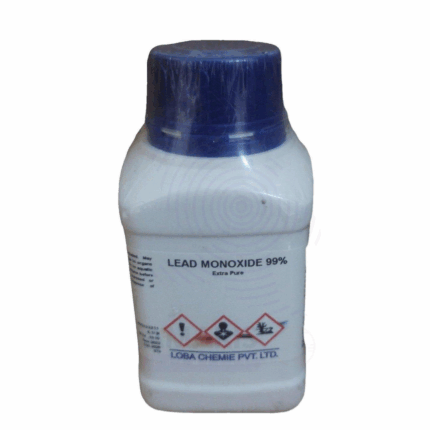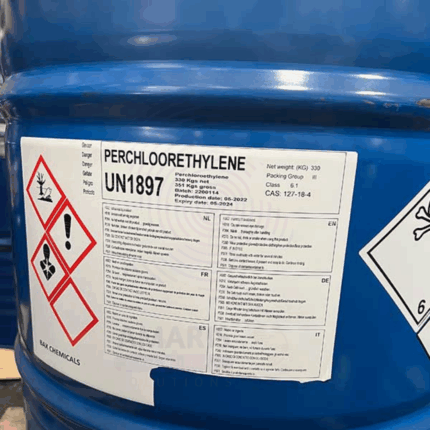“Lead Monoxide Extra Pure” has been added to your cart. View cart

Verbena Extra Pure
$ 18.45 Original price was: $ 18.45.$ 18.34Current price is: $ 18.34.
PETRI DISH PLASTIC
$ 2.12 Original price was: $ 2.12.$ 2.10Current price is: $ 2.10.
Whatsapp Order
Petri Dish Plastic is a shallow, cylindrical laboratory container made from clear, chemically resistant plastic materials such as polystyrene or polypropylene. Designed for single-use or limited reuse, plastic Petri dishes provide a convenient and cost-effective alternative to glass, especially in applications where sterility and disposability are priorities. These dishes are commonly used in microbiology, cell
Description
Table of Contents
Toggle
PETRI DISH (PLASTIC )
Primary Uses
- Laboratory and Medical Applications
- Culturing bacteria, fungi, and other microorganisms.
- Growing cell cultures in research and clinical diagnostics.
- Performing antibiotic susceptibility and other microbiological tests.
- Observing seed germination and small plant growth.
- Sterile sample collection and processing.
Secondary Uses
- Educational and Industrial Applications
- Teaching microbiology and cell biology techniques in academic settings.
- Environmental sampling for microbial contamination.
- Small-scale chemical and crystallization studies.
KEY PRODUCT FEATURES
1. Basic Identification Attributes
- Material: Polystyrene, polypropylene, or similar clear plastics.
- Shape: Shallow cylindrical dish with flat bottom and matching lid.
- Sizes: Available in various diameters (commonly 35mm, 60mm, 90mm, 100mm, 150mm).
- Closure: Loose-fitting or snap-on lid to allow gas exchange while minimizing contamination.
- Sterility: Often supplied pre-sterilized and individually packaged.
2. Physical & Chemical Properties
- Chemical Resistance: Resistant to aqueous solutions but may be sensitive to some organic solvents.
- Thermal Resistance: Generally suitable for incubation temperatures up to 37–60°C; not autoclaveable.
- Transparency: Clear for easy specimen observation under microscopes.
- Durability: Impact resistant and shatterproof compared to glass.
3. Safety & Hazard Attributes
- Non-breakable, reducing risk of injury from shards.
- Disposal considerations for biohazardous material after use.
4. Storage & Handling Attributes
- Store in a clean, dry, sterile environment.
- Handle with gloves to maintain sterility.
- Avoid exposure to solvents and extreme temperatures.
5. Regulatory & Compliance Attributes
- Manufactured in compliance with laboratory safety and sterility standards.
- Suitable for use in GMP and GLP compliant laboratories.
6. Environmental & Health Impact
- Generally non-recyclable through typical municipal systems due to biohazard risk; follow proper disposal protocols.
- Single-use disposability reduces cross-contamination risk but increases waste.
SAFETY HANDLING PRECAUTIONS
Safety Handling Precautions
- Use PPE such as gloves and masks during handling to prevent contamination.
- Dispose of used dishes according to biohazard waste regulations.
First Aid Measures
- No specific first aid needed; handle waste to avoid infection risk.
Firefighting Measures
- Combustible plastic; use CO₂, foam, or dry chemical extinguishers.
- Avoid inhalation of toxic fumes during fire.
Related products
Boyle’s Law Apparatus
Boyle’s Law Apparatus is a precision laboratory instrument designed to demonstrate and verify Boyle’s Law, which states that the pressure of a given mass of gas is inversely proportional to its volume at constant temperature. The apparatus typically consists of a sealed cylinder with a movable piston or syringe, pressure gauge, and volume scale, allowing students and researchers to observe and measure the relationship between pressure and volume in gases. It is widely used in educational and research laboratories to teach fundamental gas laws and perform experimental validation of theoretical principles.
Contact key
Product Description
The Contact Key is a fundamental switching device used in electrical circuits to manually open or close the flow of current. Commonly used in physics laboratories for demonstration and experimentation with circuits, it enables controlled activation of current for brief or sustained durations. Made from durable, conductive metals with insulating bases, Contact Keys are essential components in circuit testing, timing devices, and low-voltage experimental setups.
Lead Monoxide Extra Pure
Lead Monoxide Extra Pure, also known as litharge (PbO), is a fine yellow or reddish powder widely used in analytical chemistry and industrial processes. Its high purity makes it suitable for laboratory-grade reactions, especially in the manufacture of lead-based compounds, ceramics, glass, and batteries. In the ceramics and glass industries, it enhances the brilliance and stability of glazes and optical glass. In metallurgy, it is used as a fluxing agent during refining. Due to its toxicity and lead content, it requires strict safety handling procedures and controlled storage conditions to prevent contamination or exposure.
N-Butanol
N-Butanol (1-butanol) is a four-carbon linear alcohol with the chemical formula C₄H₉OH. It is a colorless, flammable liquid with a mild, alcoholic odor. N-Butanol is widely used as a solvent in paints, coatings, adhesives, and chemical synthesis. It serves as an intermediate in the manufacture of plasticizers, butyl acrylate, and other chemicals. Its moderate volatility and solvent properties make it valuable in industrial and commercial applications.
Perchloroethylene
Perchloroethylene (also known as tetrachloroethylene or PCE) is a clear, colorless liquid with a sweet odor, widely used as a solvent in dry cleaning and industrial degreasing. It has excellent solvent power for organic materials, is non-flammable, and chemically stable under normal conditions. Perchloroethylene is valued for its efficiency in removing oils, greases, and waxes from fabrics and metals, and serves as a key chemical intermediate in various industrial applications.
Sulphadimidine BP Vet
Sulphadimidine BP Vet (also known as Sulfadimidine or Sulfamethazine) is a synthetic sulfonamide antibacterial agent used primarily in veterinary medicine. It is effective against a broad range of Gram-positive and Gram-negative bacteria by inhibiting folic acid synthesis, essential for bacterial growth. This BP-grade product ensures pharmaceutical quality suitable for treating infections in livestock and companion animals, promoting animal health and productivity.
Sulphur Powder
Sulphur Powder is finely ground elemental sulfur known for its high purity and uniform particle size. It is widely used across industries such as agriculture, chemical manufacturing, pharmaceuticals, and rubber vulcanization. The powdered form offers increased surface area, enhancing reactivity and ease of mixing in formulations. Sulphur Powder is essential in various processes requiring sulfur as a raw material or active component.
Thinner
Thinner is a volatile solvent or a blend of solvents formulated to reduce the viscosity of paints, coatings, lacquers, and varnishes for improved application properties. It enhances flow, leveling, drying time, and finish quality. Thinners are available in different grades tailored to specific resins or coatings—such as nitrocellulose, alkyd, polyurethane, or epoxy systems—and are crucial in industrial, automotive, wood, and general-purpose applications.


 Preservatives(food)
Preservatives(food) Flavor Enhancers
Flavor Enhancers Acidulants
Acidulants Sweeteners
Sweeteners Antioxidants
Antioxidants Colorants(food)
Colorants(food) Nutraceutical Ingredients (food)
Nutraceutical Ingredients (food) Nutrient Supplements
Nutrient Supplements Emulsifiers
Emulsifiers
 Collectors
Collectors Dust Suppressants
Dust Suppressants Explosives and Blasting Agents
Explosives and Blasting Agents Flocculants and Coagulants
Flocculants and Coagulants Frothers
Frothers Leaching Agents
Leaching Agents pH Modifiers
pH Modifiers Precious Metal Extraction Agents
Precious Metal Extraction Agents
 Antioxidants(plastic)
Antioxidants(plastic) Colorants (Pigments, Dyes)
Colorants (Pigments, Dyes) Fillers and Reinforcements
Fillers and Reinforcements Flame Retardants
Flame Retardants Monomers
Monomers Plasticizers
Plasticizers Polymerization Initiators
Polymerization Initiators Stabilizers (UV, Heat)
Stabilizers (UV, Heat)
 Antifoaming Agents
Antifoaming Agents Chelating Agents
Chelating Agents Coagulants and Flocculants
Coagulants and Flocculants Corrosion Inhibitors
Corrosion Inhibitors Disinfectants and Biocides
Disinfectants and Biocides Oxidizing Agents
Oxidizing Agents pH Adjusters
pH Adjusters Scale Inhibitors( water)
Scale Inhibitors( water)
 Antioxidants(cosmetic)
Antioxidants(cosmetic) Emollients
Emollients Fragrances and Essential Oils
Fragrances and Essential Oils Humectants
Humectants Preservatives
Preservatives Surfactants(cosmetic)
Surfactants(cosmetic) Thickeners
Thickeners UV Filters
UV Filters
 Fertilizers
Fertilizers Soil Conditioners
Soil Conditioners Plant Growth Regulators
Plant Growth Regulators Animal Feed Additives
Animal Feed Additives Biostimulants
Biostimulants Pesticides (Herbicides, Insecticides, Fungicides)
Pesticides (Herbicides, Insecticides, Fungicides)
 Active Pharmaceutical Ingredients (APIs)
Active Pharmaceutical Ingredients (APIs) Excipients
Excipients Solvents(pharmaceutical)
Solvents(pharmaceutical) Antibiotics
Antibiotics Antiseptics and Disinfectants
Antiseptics and Disinfectants Vaccine Adjuvants
Vaccine Adjuvants Nutraceutical Ingredients (pharmaceutical)
Nutraceutical Ingredients (pharmaceutical) Analgesics & Antipyretics
Analgesics & Antipyretics
 Analytical Reagents
Analytical Reagents Solvents(lab)
Solvents(lab) Chromatography Chemicals
Chromatography Chemicals Spectroscopy Reagents
Spectroscopy Reagents microbiology-and-cell-culture-reagents
microbiology-and-cell-culture-reagents Molecular Biology Reagents
Molecular Biology Reagents Biochemical Reagents
Biochemical Reagents Inorganic and Organic Standards
Inorganic and Organic Standards Laboratory Safety Chemicals
Laboratory Safety Chemicals Specialty Laboratory Chemicals(Special Laboratory Equipment)
Specialty Laboratory Chemicals(Special Laboratory Equipment)
 Demulsifiers
Demulsifiers Hydraulic Fracturing Fluids
Hydraulic Fracturing Fluids Scale Inhibitors(oil)
Scale Inhibitors(oil) Surfactants(oil)
Surfactants(oil) Drilling Fluids
Drilling Fluids
 Dyes and Pigments
Dyes and Pigments Bleaching Agents
Bleaching Agents Softening Agents
Softening Agents Finishing Agents
Finishing Agents Antistatic Agents
Antistatic Agents
 Admixtures
Admixtures Waterproofing Agents
Waterproofing Agents Sealants and Adhesives
Sealants and Adhesives Curing Compounds
Curing Compounds Concrete Repair Chemicals
Concrete Repair Chemicals Anti-Corrosion Coatings
Anti-Corrosion Coatings
 Surfactants(cleaning)
Surfactants(cleaning) Builders
Builders Enzymes
Enzymes Solvents (Cleaning)
Solvents (Cleaning) Fragrances
Fragrances
 Electronic Chemicals
Electronic Chemicals Catalysts
Catalysts Lubricants
Lubricants Photographic Chemicals
Photographic Chemicals Refrigerants
Refrigerants Automotive chemicals
Automotive chemicals Pyrotechnic Chemicals
Pyrotechnic Chemicals
 Biodegradable Surfactants
Biodegradable Surfactants Bio-based Solvents
Bio-based Solvents Renewable Polymers
Renewable Polymers Carbon Capture Chemicals
Carbon Capture Chemicals Wastewater Treatment Chemicals
Wastewater Treatment Chemicals
 Pigments
Pigments Solvents(paint)
Solvents(paint) Specialty Coatings
Specialty Coatings Binders/Resins
Binders/Resins Additives
Additives Driers
Driers Anti-Corrosion Agents
Anti-Corrosion Agents Functional Coatings
Functional Coatings Application-Specific Coatings
Application-Specific Coatings
 Fresh Herbs
Fresh Herbs Ground Spices
Ground Spices Whole Spices
Whole Spices Spice Blends
Spice Blends Dried Herbs
Dried Herbs
 Leavening Agents
Leavening Agents Dough Conditioners
Dough Conditioners Flour Treatments
Flour Treatments Fat Replacers
Fat Replacers Decoratives
Decoratives Preservatives(baking)
Preservatives(baking)
 Plasticizers & Softeners
Plasticizers & Softeners Reinforcing Agents
Reinforcing Agents Adhesion Promoters
Adhesion Promoters Vulcanizing Agents
Vulcanizing Agents Antidegradants
Antidegradants Blowing Agents
Blowing Agents Fillers & Extenders
Fillers & Extenders Accelerators & Retarders
Accelerators & Retarders



















